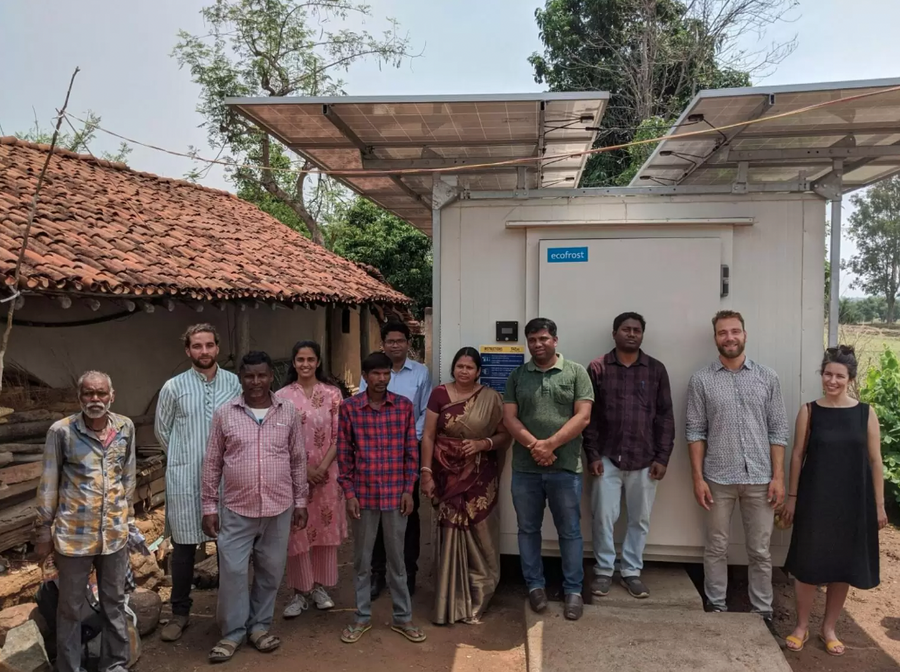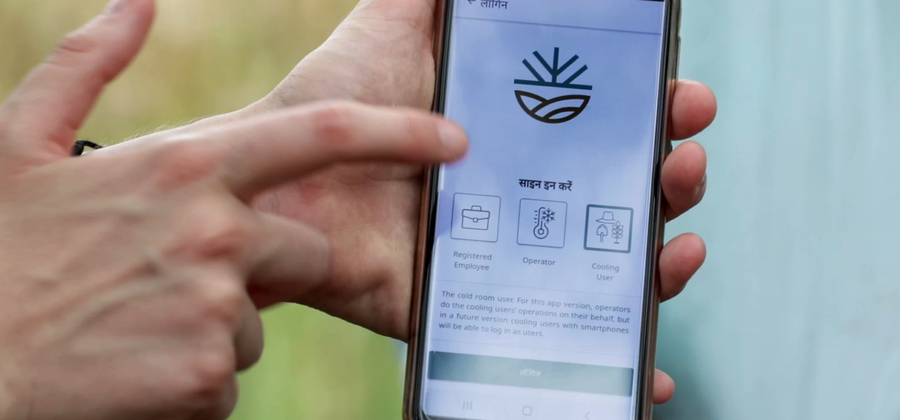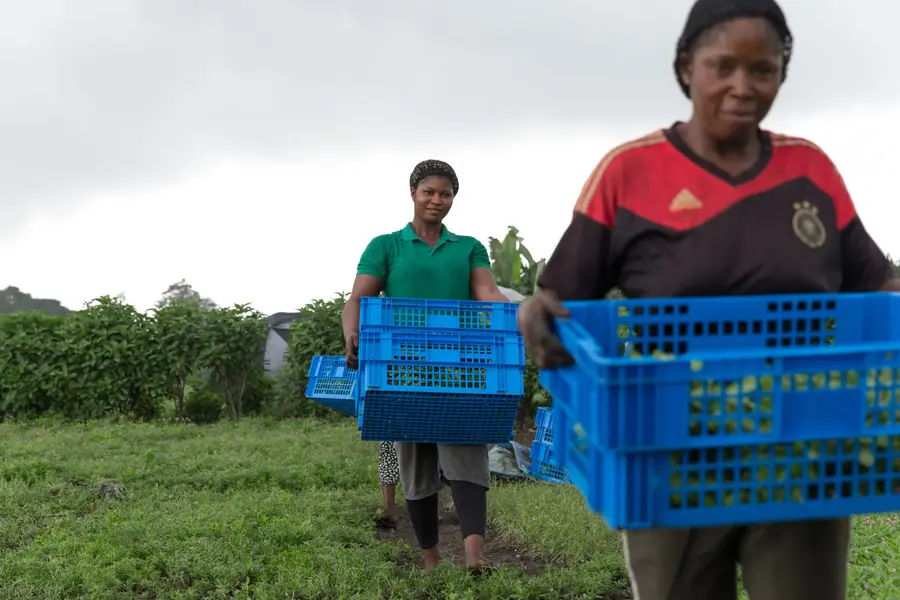As global warming increasingly affects the Indian subcontinent, solutions for the adaptation of the agricultural sector are urgently needed.
In March and April 2022, unprecedented and deadly heat waves swept the Indian subcontinent, with temperatures soaring above 45 degrees Celsius in many parts of the country. Climate change means such events are likely to occur more frequently, become more intense, and last for longer. In this context, millions of farmers in India must deal with scorched or stunted crop growth. Heat stress also rapidly degrades the quality of harvested crops, forcing farmers to settle for prices that may barely cover the costs of transporting produce to market. For many smallholder farmers, who have borrowed money to purchase seeds and fertiliser at the beginning of the season, this can lead to spiralling debts. Organisations such as UNEP and FAO are highlighting the importance of food cold chain development for the creation of more sustainable food chains. Decentralised and sustainable cold storage solutions can provide farmers and vendors with viable and affordable options.
In 2021, BASE and Empa launched the Your Virtual Cold Chain Assistant (Your VCCA) project — aimed at reducing postharvest food loss, improving farmer livelihoods, and enhancing food security. The project focuses on a pay-per-use or servitisation business model for cold storage that makes cooling more affordable and accessible for smallholder farmers and traders. In addition, the project has developed a data-science-based mobile App to provide pre- and post-harvest intelligence. Since the launch of the project, the Cooling-as-a-Service model has been rolled out over three Indian provinces, locally engaging cooling companies to provide cold rooms on a pay-per-use basis. Oorja, ColdHub and KoelFresh went forward with testing the approach towards the end of the year 2021.
SERVITISATION OF COLD ROOMS IN ACTION
The shift from a traditional sales model for equipment to X-as-a-Service (Everything-as-a-Service or XaaS) bears multiple advantages for the deployment of more sustainable energy systems which can often be expensive, such as renewables and energy efficiency equipment. Under XaaS, the end-user pays for the service or outcome that equipment provides. This fee represents for example units consumed or the time duration of consumption. When applied to cooling, servitisation can allow more expensive and better-performing refrigeration systems, which represent high upfront capital expenditure, to be offered to a wider audience who may be unable or reluctant to make such investments.
In the context of the Your VCCA project, this approach was applied to small cold rooms which can be deployed in rural areas closer to smallholder farmers, and powered by solar photovoltaics. Farmers pay for the number of crates of commodities that they have in storage and depending on the time they let their produce in. Operators benefit from recurrent revenues, increased long-term profitability, as well as from a larger potential client base.
Following the launch of the pilots, the Your VCCA team visited the cold room sites in Shiladesh (Himachal Pradesh), Muzaffarpur (Bihar), and Rourkela, Sundargarh, Keonjhar and Sambalpur (Odisha) to gather insights. The trip coincided with high summertime temperatures, and the team witnessed firsthand the postharvest challenges encountered by farmers and was able to collect feedback on their use of the cold rooms.
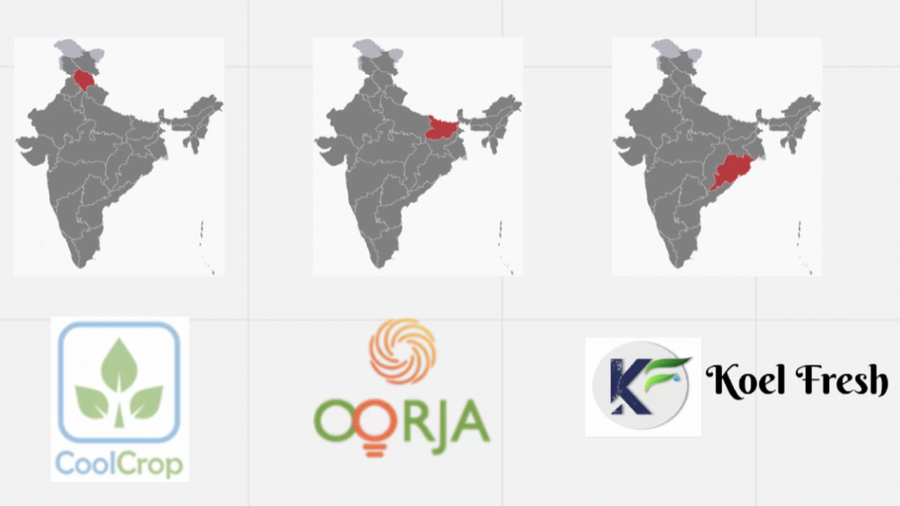
Areas covered by the Your VCCA solution in India in collaboration with local partners
“There have been times that farmers expect such low prices for their crops that they do not find it worth harvesting them. Last season, tonnes of tomatoes and cauliflowers were discarded on the roads because smallholders in Minapur block did not see the value in bearing the costs of transporting them to the markets. But soon after, the price of tomatoes — which had fetched INR 20 per crate [25 kgs] during the market glut immediately after harvest — rose to INR 500 per crate towards the end of the season. Cold storage will ensure farmers salvage their surplus crops and benefit from these upward fluctuations,” says Chandan Kumar, field assistant with Oorja Solutions, Your VCCA’s local partner in Bihar.
These comments were echoed by Farmers using the cold rooms, who stated that prolonging the shelf-life of their crops, even by a couple of weeks, brought them better prices than liquidating their produce on the day of the harvest.
“We were able to store 900 crates of apples for an additional four months from the plucking season in our 20 metric tonnes solar-powered rooms last season. While farmers stored their crates at an affordable rate of INR 1.5 per kg per month, they received INR 1200-1,400 per crate from delayed sales – almost 1.5 times the typical amount,” reports Srinivas K. Marella, the Chief Operating Officer at CoolCrop, implementing the Your VCCA solution for the smallholder apple farmers in Himachal Pradesh.
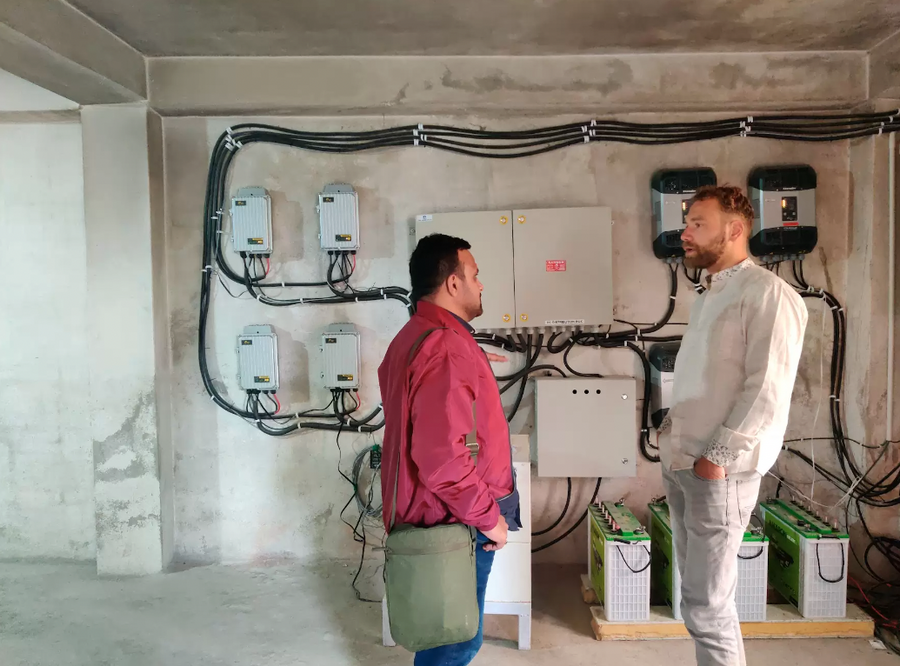
3-phase solar inverter in cold rooms in Shiladesh, Himachal Pradesh
STRENGTHENING COOLING BENEFITS THROUGH DIGITALISATION
While visiting local stakeholders, the project team tested the preliminary version of the app with the cold room operators. The app’s first version supports cold room operators to digitalise inventory management which allows for easier data collection and analysis.
After her first trial run with the app, Rita, the operator of Oorja’s Muzaffarpur cold room, stated:
“Keeping track of who has what stored in the room, and how much is owed by them is difficult to manage. The app brings all this to one place. The step-by-step process and pictures with each option make the app intuitive.”
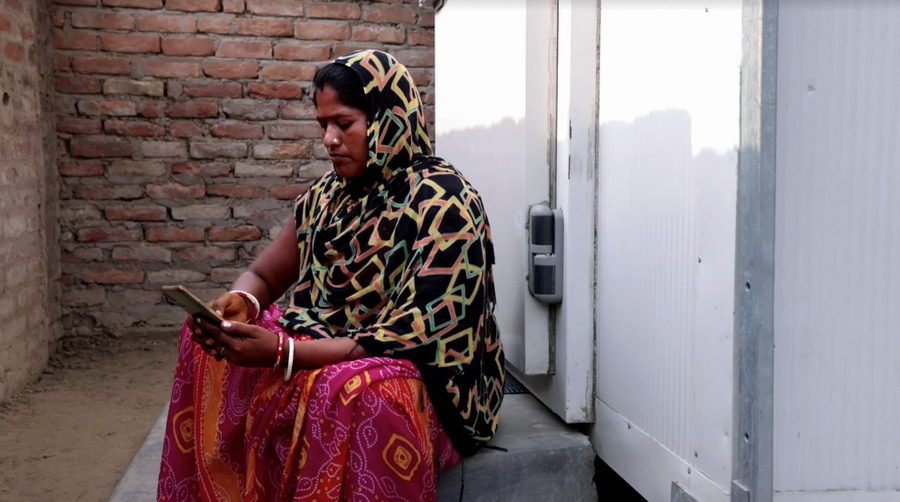
Rita, the cold room operator at Oorja, testing the app in Muzaffarpur, Bihar
By also taking note of the number of days each farmer intends to store their crops, the app indicates the occupancy rate of the room for the coming days.
The app also includes digital twins to simulate how fresh produce stored in a crate fares over time, based on the room temperature using real-time sensor data. Operators will be able to inform farmers of the remaining shelf-life of their produce, information which can be used to determine continued storage or collection and selling. In a later version of the app, the farmers will be able to monitor the shelf-life of their stored produce themselves, on their phones. Discussions with farmers and the collectives operating the cold rooms indicate that the app addresses some of the vital concerns which had previously deterred use of cold room facilities.
Walkthrough of Check-in and Check-out process on Coldtivate
Without access to decentralised cold rooms in their vicinity, most farmers previously attempted to store produce in large-scale commercial rooms located in cities. Farmers complained that such solutions are problematic, reliant on intermediaries to check on quality. In some cases, farmers sent their produce directly to the market unable to check if claims on quality were accurate and received lower prices due to spoilage. The Coldtivate app mends the trust deficit by giving farmers a means to directly monitor the quality of their crops, shielding them from potential exploitation.
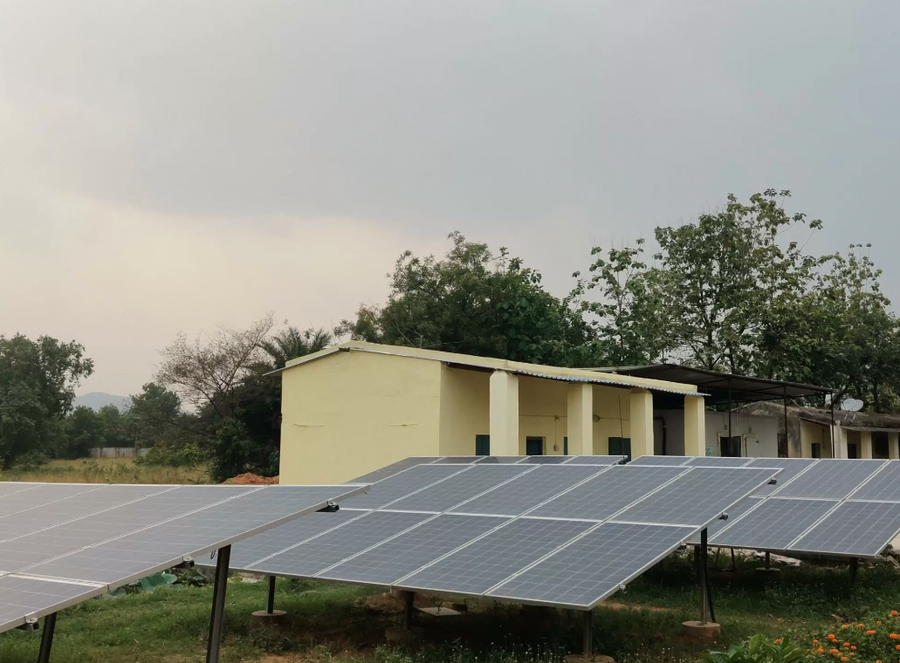
Solar-powered cold rooms in Sundargarh, Odisha
WHERE TO NOW?
An issue raised by farmers is the damage to produce in transit, with farmers noting that securing higher prices often requires travelling further distances to reach haats (wholesale markets) or mandis (local markets). They have requested the extension of the as-a-service model to include refrigerated transportation and to make these services more affordable to smallholders. Running a cold room is only a small component of the more extensive infrastructure needed for farmers and traders to secure the price they deserve for the crops they produce. Cold transportation is a logical part of the wider cold chain for fresh produce. Vehicles equipped with temperature sensors can be integrated into the Your VCCA solution in order to enable quality monitoring across the entire cold chain.
Another possible direction is the transformation of cold rooms into aggregation centres, informing potential buyers via the Coldtivate app about what is currently stored in the cold room. Potential buyers can then collect produce directly from the cold room, guaranteeing freshness and sparing transportation costs to market for farmers.
“Envisaging cold rooms to be aggregator points for fruits and vegetables grown can help with direct linkage of farmers with the bulk market, which is needed for them to negotiate better prices collectively,” remarks Austosh Nayak. The servitisation model would allow these aggregation centres to be owned and run by the local farming communities, and digitalisation would allow for seamless and remote transactions.
The servitisation model also allows the ownership of cold rooms to be transferred to the local farming community, a configuration wherein smallholders can benefit from the dual opportunity of storing a portion of their crops at nominal rates and selling the rest to the farmer producer organisations (FPOs) at above-market rates, as the latter aggregate crops and sell in bulk to retail stores. One of Your VCCA’s pilot sites in Odisha has already implemented this model, where the responsibility to operate the cold rooms has been taken up by FPOs.
The FPOs aggregate and sell in bulk to retail stores, helping farmers with forward market linkage and negotiating better prices. Some FPOs hope to engage in postharvest processing, with the value addition giving them a price mark-up. In most cases, the profits are used to cover the operating costs for the cold room and distributed among farmers to purchase seeds and fertilisers for the next sowing season.
